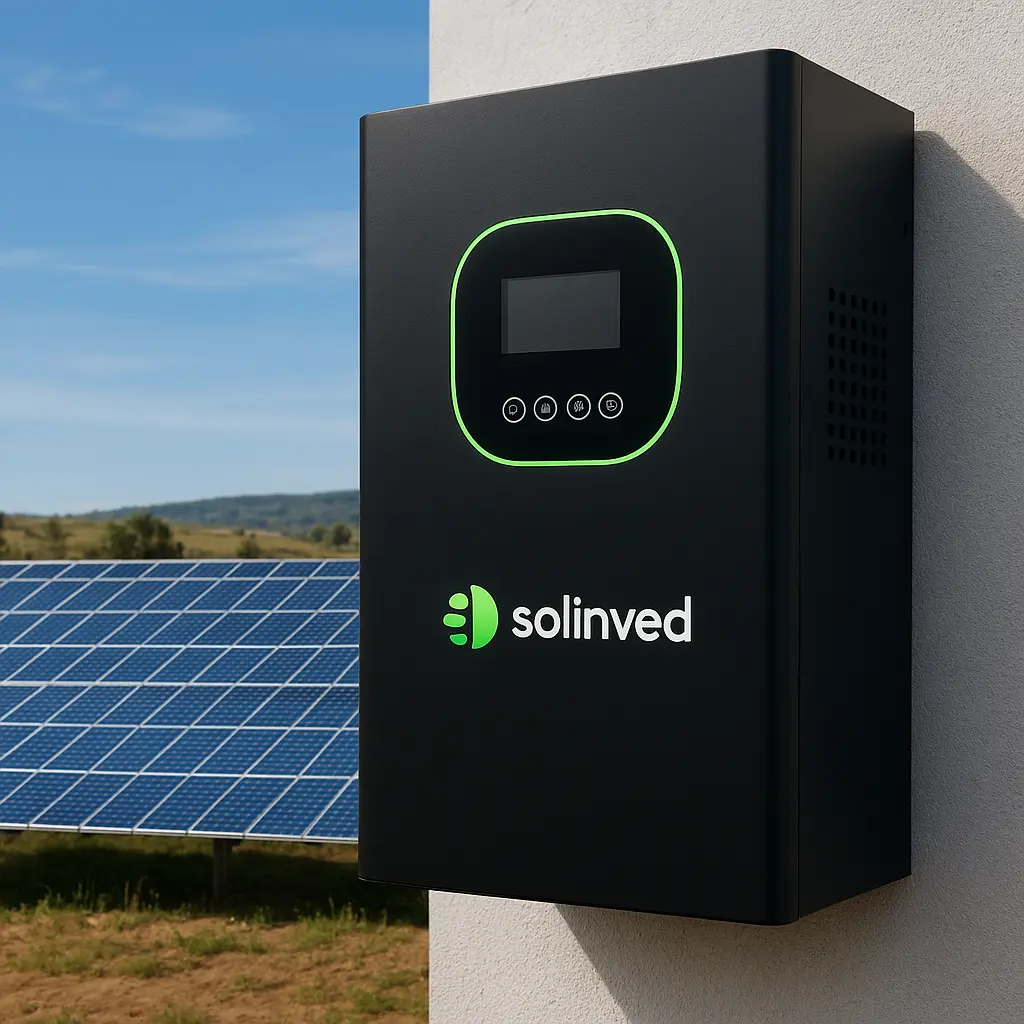


Inverter technology is one of the most important factors determining the efficiency of solar energy systems. An inverter generates electricity by converting direct current (DC) from solar panels to alternating current (AC). However, this conversion requires advanced technology to maximize the energy output from the panels: MPPT (Maximum Power Point Tracking).
In this article, we will examine in detail what MPPT technology is, how it works, and how it is used in Solinved inverter systems.
MPPT stands for "Maximum Power Point Tracking," and it is a technology that continuously monitors the maximum energy a solar panel can produce.
Each solar panel produces different amounts of energy depending on the sunlight intensity, temperature, and voltage. However, because the panels' current (I) and voltage (V) values change constantly, the system has a "maximum power point" at which it achieves its highest power.
MPPT technology constantly monitors this point, automatically adjusting the inverter's operating voltage and maximizing energy production.
MPPT technology continuously analyzes the inverter's input voltage. By measuring the voltage and current generated by each panel or group of panels, it finds the highest point on the power curve (P = V × I).
After finding this point, the inverter operates using this voltage as a reference. Thus:
If sunlight decreases, the voltage is increased.
If light intensity increases, the current is balanced.
As a result, the inverter provides the highest power efficiency under all conditions.
MPPT technology makes a significant difference in energy production compared to traditional inverter systems.
1. Increased Efficiency
MPPT technology can increase panel energy production by up to 20%. It stabilizes system performance, especially in cloudy weather or partial shading.
2. Smarter Energy Management
The system optimizes the operating point based on real-time sunlight, temperature, and the panel. This ensures balanced energy production throughout the day.
3. Long Life and Protection
MPPT technology automatically compensates for overvoltage and undervoltage conditions. This extends the inverter's lifespan and increases system security.
4. Faster Payback
Increased energy production shortens the return on investment. Investors using MPPT inverters quickly gain cost advantages.
MPPT is often compared to PWM (Pulse Width Modulation) technology.
| Features | PWM | MPPT |
|---|---|---|
| Efficiency | %70 – %80 | %95 – %99 |
| Operating Logic | Operates at constant voltage | Dynamic tracking of maximum power point |
| Energy Loss | Higher | Minimum |
| Application Area | Small systems | Professional and high-capacity systems |
| Battery Compatibility | Limited | Compatible with all battery types |
Solinved inverter systems are equipped with MPPT technology. This maximizes energy production and increases system durability.
Solinved makes a difference in energy conversion by implementing the MPPT system in its inverter technologies in the most efficient way.
1. High Efficiency Rate
Solinved smart inverters offer up to 98% efficiency thanks to MPPT technology. This rate minimizes energy losses.
2. Wide MPPT Range
They provide high performance even with different panel groups and varying lighting conditions. Solinved inverters offer system flexibility with their wide MPPT operating ranges.
3. Remote Monitoring and Smart Control
MPPT data can be monitored in real time via the inverter interface or Solinved's digital control panel. This feature allows for continuous control of energy production.
4. Energy Storage Integration
The MPPT system can be integrated with Solinved lithium batteries. It stores excess solar energy in the batteries, enabling use at night.
5. Agricultural and Industrial Use
In agricultural irrigation systems, MPPT technology ensures the correct speed of pump motors. In industrial systems, it maintains the energy balance of production lines.
MPPT inverters can be used in any area requiring maximum efficiency in energy management:
Residential Systems: Provides continuous energy optimization in rooftop solar systems.
Commercial Facilities: High energy production even at different light angles in large areas.
Agricultural Irrigation Systems: Reduces energy loss when used in conjunction with solar drives.
Electric Vehicle Charging Systems: Integrates with Solinved Charge to enable intelligent storage of solar energy.
Energy Storage Systems: Works in full harmony with lithium batteries, efficiently storing excess energy.
1. What does MPPT do?
It ensures maximum energy extraction from solar panels. It automatically finds the most efficient operating point under all conditions.
2. What is the difference between an MPPT inverter and a PWM inverter?
MPPT inverters offer up to 99% efficiency by dynamically tracking power, while PWM inverters operate at a fixed voltage and experience greater energy loss.
3. Are MPPT inverters compatible with all systems?
Yes, Solinved MPPT inverters are compatible with all solar panel and battery systems.
4. Can MPPT be used in agricultural irrigation systems?
Yes, when used with solar drives, it optimizes the energy balance of pump motors.
5. What is the MPPT advantage of Solinved inverters?
They offer full performance with a wide MPPT range, intelligent control panel, high efficiency, and energy storage integration.